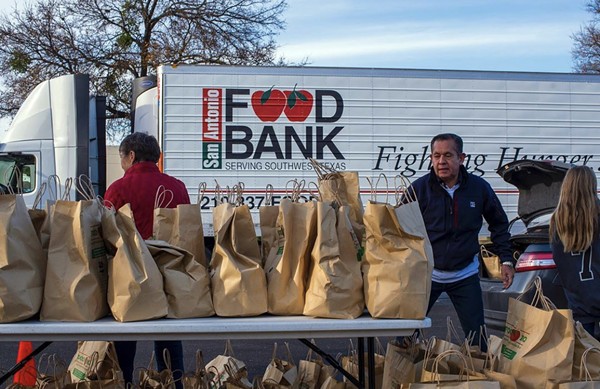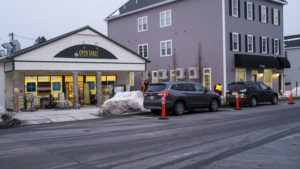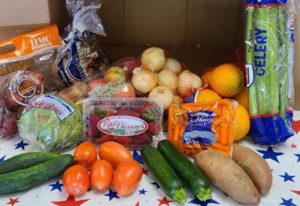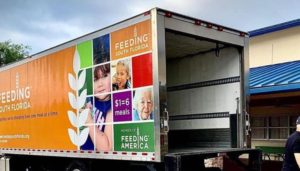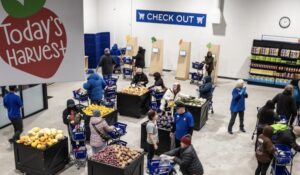Michael Guerra of San Antonio Food Bank was sitting in a meeting about the food bank’s coronavirus contingency plan when he thought back to a chance encounter he’d had that morning: a food-insecure client of the food bank was lamenting the inability to acquire reserve food, when it was already so difficult to get food to meet immediate needs.
As the food bank executives met to prepare their contingency plan, Guerra asked who would be making contingency plans for the lower-income households they serve. “Logically, the food bank helps you weather the storm,” said Guerra, who is San Antonio Food Bank’s Chief Resource Officer and has experience in disaster planning with Red Cross and Feeding America. He also realized, “We’ve got to get ahead of this because if we wait, it’s too late.”
The result is a month-long effort, begun March 5, to prepare 300,000 “corona preparedness kits” containing a 14-day supply of non-perishable food, as well as hand sanitizers, cleaning supplies, diapers and pet food, to be distributed through local and mobile pantries, and especially senior centers, where the need for such kits could be higher.
The response is one of many being undertaken by food banks and pantries across the country as they react to the many unknowns of the coronavirus. Deep cleanings, measures to minimize social contact and calls for extra donations and volunteer help are among the more common responses food banks are taking, beyond basic monitoring of the situation. Feeding America this week established a $2.65 million fund to support food- and fund-raising efforts, including building an inventory of emergency food boxes to be distributed throughout the network.
To limit interpersonal contact, distributions that are open-air, drive-through and grab-and-go are becoming increasingly popular. Gleaners Food Bank of Indiana, for example, in less than 24 hours put together a plan to hold drive-through distributions at its on-site pantry, which feeds 5,000 to 6,000 per month. Rather than come into a waiting room that can hold up to 200 or so people, clients instead are proceeding through a cleaned-out, drive-through garage where volunteers can load up cars, three at a time.
“The clients we serve here on site meet the definition of the population that should be practicing social distancing,” said Joe Slater, Chief Financial and Operations Officer at Gleaners. “We wanted to do what we could to protect that population.”
In some ways, the modified distribution has been an improvement over the typical one. While clients may take up to two hours to get through the traditional client-choice pantry if they arrive at a peak time, it is taking them less than half an hour to go through the drive-through, even at peak, Slater said. In addition, the drive-through method is requiring about half the 20 to 25 volunteers typically required at the traditional pantry, he said.
Snohomish Community Food Bank, located in the county next to the one in Washington state where the first U.S. coronavirus case was reported, has also modified its distribution to encourage social distancing. Rather than shop the pantry as they normally do, clients are placing orders via a clipboarded order form. Once the order is filled by volunteers, clients can pick it up or have it delivered to their cars.
“The hard part is that we need to do the order form in three languages,” including Spanish and Ukranian, said Elizabeth Grant, Executive Director. Clients have been supportive of the changes. “We were surprised by how many people were so pleased with the way we were doing it,” Grant said.
As much as possible, food banks and pantries are striving to maintain some form of client choice. Gleaners has situated pallets of food near the drive-up lanes so clients can choose a produce and a protein. Snohomish clients can indicate on their order forms a preference for cheese over frozen vegetables, for example, though they are not able to pick out which type of cheese.
Some agencies are modifying intake procedures, including temporarily waiving the requirement for clients to sign in. Electronic systems in which clients sign with styluses are sometimes being replaced with clipboards and enough pens for clients to take the pen with them. Care and Share Food Bank of Southern Colorado has adopted an “open door” policy to limit contact with knobs and handles, and is regularly cleaning doors that must remain closed.
While all these considerations may be important, the most critical is simply to keep the flow of charitable food going, said Brian Greene, President and CEO of Houston Food Bank, which is assembling a few thousand “quarantine kits,” for people without resources who may be forced to stay home. The need for continuity is especially acute as growing numbers of volunteers choose to stay home. “The people we serve don’t have reserves,” Greene said. “So any interruption of service is going to hit them pretty hard.”
